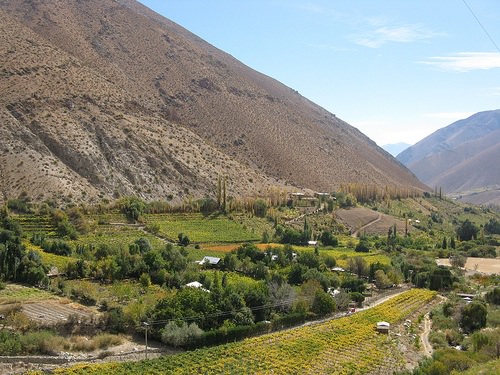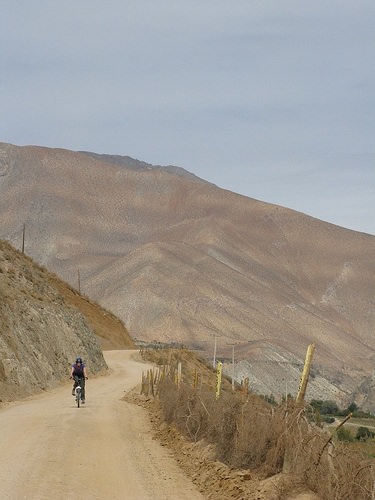The skies over Chile’s Valle del Elqui are clear more than 300 days a year, making it an ideal place to study the stars. During our two days in the valley, Laura and I did just that… sort of.
The guide of the astronomy talk we signed up for led us to a dusty field, set up his telescope and then declared that science, constellations, the cardinal directions and naming things are — and I quote — “stupid.” Needless to say, we didn’t learn much about astronomy. We did, however, manage to see Saturn and its rings and a couple bright stars, I’m not sure which ones.
 Valle del Elqui stretches the width of Chile, from the northern beach town of La Serena to the Argentenian border. It’s punctuated by little villages that sustain themselves mostly by growing the super-sweet grapes used to make the alcohol pisco, Chile’s national drink.
Valle del Elqui stretches the width of Chile, from the northern beach town of La Serena to the Argentenian border. It’s punctuated by little villages that sustain themselves mostly by growing the super-sweet grapes used to make the alcohol pisco, Chile’s national drink.
 Labels for the pisco bottles, still on the spool
Labels for the pisco bottles, still on the spool
More than 85 percent of the pisco produced in Chile comes from the valley. On the way in, we toured the family-run Fuegos distillery, where we tasted the grapes and sampled the pre-pisco alcohol, which has an alcohol content of 68.7 percent.
Laura and I fell in love with Valle del Elqui during our time there. On our second day, we rode mountain bikes down the dry dirt road from the far interior town of Alcohuaz to our home base in Pisco Elquis. Along the way, we passed lots of grape vines, a few men on horseback and many dogs too sleepy to bother chasing us. We stopped at the artists’ community outside the village of Horcón, where we wandered among artisans in hammocks and browsed booths filled with medicinal herbs, handmade jewelry and batiked clothing.
 Laura and me during our bike ride, wearing protective head gear to prevent injury.
Laura and me during our bike ride, wearing protective head gear to prevent injury.




